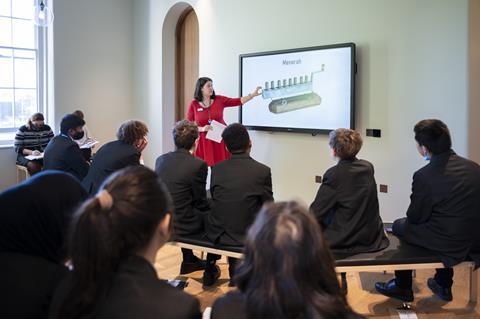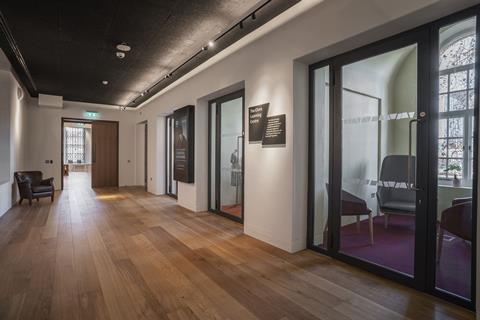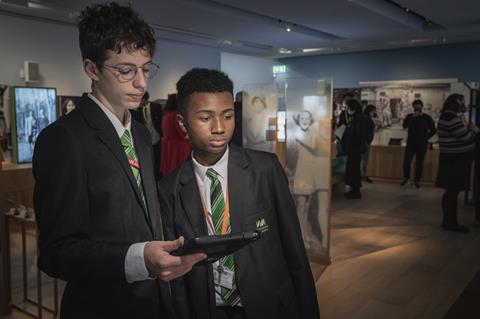Learning spaces at the Imperial War Museum (IWM) are now open to complement the Second World War Galleries and The Holocaust Galleries, making the London attraction the first museum in the world to house both displays under the same roof.

Both IWM’s learning centres (Taube Family Holocaust Learning Centre and the Clore Learning Centre) offer a multi-functional space within the museum that are exclusively for schools.
Spanning two floors, The Second World War Galleries and The Holocaust Galleries bring together the stories of real people from diverse communities to examine the complex relationship between the Holocaust and the course and consequences of the conflict.
In the Taube Family Holocaust Learning Centre, IWM’s new Holocaust Learning Programme supports secondary students in asking questions about one of the most difficult subjects in human history.
This programme uses new technology to guide secondary students through The Holocaust Galleries, critically considering why the Holocaust happened, why we still study it and what it means in our world today.
“I believe that this learning programme is not just about visiting the exhibition. It’s aiming higher and it should become a part of students’ Holocaust education in the UK.”
Key Stage 3 teacher
Produced in consultation with secondary schools from across the UK, students will be given space to examine these questions by looking at personal stories and objects.
Through self-guided and directed study, students are given additional context for the stories they encounter, and the Taube Family Holocaust Learning Centre is said to offer a safe and supportive learning environment that enables conversation about this challenging subject and its legacy today.
Learning inside the Clore Learning Centre
In the Clore Learning Centre, the second of the new centres, IWM’s Documentary Challenge session offers both primary and secondary schools a digitally led experience.
Students develop historical inquiry skills to question, consider, debate, and evaluate primary sources, while also gaining a deeper understanding about the impact of war and conflict on people’s lives in the past, and its relevance in society today.

Which stories are too important to be kept inside the museum? What deserves more attention from the wider world? Who is telling the story and why? Students are given smart-cameras and tasked with making mini documentaries about the people and objects they feel the world needs to know about.
IWM’s We Were There: Ask Questions about Conflict session offers a unique chance for both primary and secondary schools to meet veterans and eyewitnesses from World War Two up to today.
In the new Clore Learning Centre students are given the opportunity to hear their personal stories, ask questions and connect through conversations.

This session encourages active exploration of the consequences of war, and helps students understand the impact of war and conflict on people’s lives, and the variety of these experiences.
Through personal stories, question-based learning and conversation, students have a chance to get to know the people who were there, living through conflict.
The state-of-the-art learning centres are supported by National Lottery Heritage Fund, Clore Duffield Foundation and Taube Philanthropies as part of a six-year long transformation project.
For more information about school trips to the Imperial War Museum, go to www.iwm.org.uk/learning










